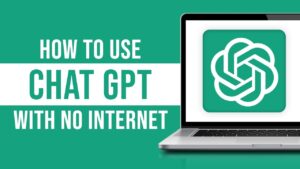So, you’ve just finished your tech course! Congratulations! 🥳 You’ve successfully navigated the world of coding, data, design, or whatever tech skill you chose to pursue. You’re probably feeling a mix of excitement and maybe a little “what now?” Don’t worry, you’re not alone. This is the crucial stage where you transform your newfound knowledge into a thriving tech career. Let’s walk together towards an action plan for your newly acquired technical skill.
1. Build a Portfolio (Even If You’re a Beginner)

A course is just the beginning. The real learning happens when you apply your skills to real-world projects. Employers want proof of your skills, so start working on small projects to showcase what you’ve learned. Depending on your field, this could be:
- Build Personal Projects: Don’t let your knowledge stagnate. Start working on projects that interest you. A portfolio of tangible work is your best selling point. You could build a simple website, a to-do list app or anything to showcase your skill.
- Contribute to Open Source: Find open-source projects on platforms like GitHub that align with your skills. Contributing not only sharpens your abilities but also showcases your collaborative spirit.
- Revisit Course Materials: Don’t just toss your notes aside. Regularly review the concepts you learned to reinforce your understanding. This becomes inevitable if you regularly dedicate time to solve coding challenges.
2. Build Your Online Presence

Sponsored
In today’s tech world, your online presence is crucial.
- GitHub: If you’re a developer, GitHub is non-negotiable. You must have a github account to showcase your projects, contribute to repositories, and demonstrate your coding style.
- LinkedIn: Create a professional profile on linkedin highlighting your skills, experience, and education. Connect with industry professionals, join relevant groups, and engage in discussions.
- Personal Website/Portfolio: Create a website to showcase your projects, skills, and personality. It’s your digital business card.
- Developer Publishing Platforms: Share your knowledge by writing blog posts about your learning journey or technical topics on platforms such as medium.com, dev.to or hashnode. This demonstrates your passion and understanding.
3. Grow your network!

Tech is a community. Building connections can open doors to opportunities you never imagined. The solution you need might be what another tech partner has to offer.
- Attend Meetups and Conferences: Local tech meetups and industry conferences are excellent places to meet professionals, learn about new technologies, and network.
- Connect with Your Instructors and Classmates: Your instructors and classmates can be valuable resources and connections. They can help you reach-out to relevant opportunities.
- Join Online Communities: Participate in online forums, Slack channels, and Discord servers related to your tech field.
4. Get Hands-On Experience

While building personal projects is a great way to solidify your skills, working on external projects pushes you beyond your comfort zone and forces you to meet real-world demands. This experience can significantly accelerate your growth and demonstrate your adaptability to potential employers.
- Freelancing (Upwork, Fiverr, Toptal): Gain experience working on diverse projects for clients, building your portfolio, and learning to manage client expectations and deadlines. This provides real-world pressure to perform to a clients satisfaction.
- Volunteering (Help non-profits with their tech needs): Apply your skills to make a positive impact, gain experience working with real-world constraints, and build a portfolio of meaningful projects. This provides the added benefit of helping a good cause.
- Hackathons & Bootcamps (Great for networking and learning): Collaborate with others on intensive projects, learn new technologies in a fast-paced environment, and network with industry professionals. These provide a very condensed and intense learning environment.
5. Optimize Your Resume & LinkedIn Profile

- Your resume should highlight your tech skills, any relevant projects, certifications and problem-solving abilities.
- On LinkedIn, optimize your profile with a professional photo, headline, and a summary that clearly states your skills and career goals. Follow tech influencers and companies you’re interested in.
- Connect with experts to build your resume or leverage AI Resume builders to enhance your resume.
Your Next Significant Steps
With your skills, experience, and a strong online presence, you’re now at a pivotal point. You have two primary paths to explore:
- Traditional job hunting
- Entrepreneurial problem-solving.
Both paths offer unique rewards and challenges, and the best choice depends on your personal goals and aspirations.
1. Job Hunting: The Traditional Route
Job hunting remains a tried-and-true method for entering the tech industry. It provides stability, opportunities for growth, and the chance to work within established teams. If you’re looking to enter the workforce, job hunting is the next logical step. It involves finding roles that match your skills and actively applying. Here’s how to navigate this process effectively:
- Tailor Your Resume and Cover Letter: Customize your resume and cover letter for each job application, highlighting the skills and experience relevant to the specific role.
- Prepare for Technical Interviews: Practice common interview questions, brush up on data structures and algorithms (if applicable), and be prepared to discuss your projects.
- Build a Portfolio: Make sure your portfolio is well-organized, visually appealing, and showcases your best work.
- Utilize Job Boards: Explore job boards like LinkedIn, Indeed, Glassdoor, and specialized tech job boards.
- Reach Out to Recruiters: Connect with recruiters on LinkedIn and let them know you’re actively seeking opportunities.
- Internships and Entry-Level Roles: Don’t be afraid to start with an internship or entry-level role. These positions provide valuable experience and can lead to more advanced opportunities.
- Network for Referrals: Referrals increase your chances of getting hired, so leverage your connections.
- Don’t Give Up: The job search can be challenging, but persistence is key. Keep applying, keep learning, and keep networking.
2. Problem Solving: The Entrepreneurial Route
For those with an entrepreneurial spirit, problem-solving involves creating products or services that address real-world needs. This path offers the potential for greater autonomy and financial reward. If you want to take control of your career and create something of your own, consider problem-solving by building products, services, or solutions that you can monetize. Here’s how to go about it:
- Identify a Problem to Solve: Look around and identify gaps in the market or pain points in your daily life, in your community, or in the industry that can be improved with technology. Conduct market research to validate the problem and assess its potential.
- Develop a Prototype or MVP (Minimum Viable Product): Brainstorm innovative solutions that address the identified problem. Instead of aiming for a perfect product, you start can start with a simple version (MVP) that solves the core problem effectively and test your solution with real users.
- Test and Gather Feedback: Share your product with potential users, collect their feedback, and ontinuously improve your service or product functionality to meet market demands.
- Monetization Strategy: Develop a clear plan for how you will generate revenue (e.g., subscriptions, sales, advertising). Explore different monetization models and choose the one that best suits your product or service.
- Marketing and Branding: Learn basic digital marketing strategies to promote your service or product effectively. Develop a marketing strategy to reach your target audience.
- Leverage Online Platforms: Use platforms like Gumroad, Patreon, or any popular marketplace like the App Store and Play Store to sell digital products.
- Freelance and Consultancy: If product development isn’t your thing, offer your skills as a service by working as a consultant or freelancer.
- Legal and Financial Considerations: Establish a legal structure for your business. Manage your finances effectively and seek professional advice when needed. Find funding if needed via bootstrapping, investors, or loans.
- Continuous Improvement: The market constantly changes, so it is necessary to continue to improve and innovate.
Don’t Give Up:
The path of an entrepreneur is rarely smooth. When you choose to solve problems by creating your own products or services, you’re signing up for a rollercoaster of highs and lows. There will be days when your code refuses to compile, when your market research reveals unexpected hurdles, and when doubt creeps in, whispering that your idea is flawed.
Remember this: every successful entrepreneur has faced these same challenges. Rejection is not a full stop, it’s a detour. A failed feature is not a sign of incompetence, it’s a data point. A slow-growing user base is not a death knell, it’s a call for innovation.
Key Takeaways:
- Continuous Learning: The tech world is constantly evolving. Stay updated with the latest trends and technologies.
- Be Patient: Building a successful tech career takes time and effort. Don’t get discouraged if you don’t land your dream job immediately.
- Embrace Challenges: Challenges are opportunities to learn and grow. Don’t be afraid to step outside your comfort zone.
- Show Your Passion: Let your passion for technology shine through in your projects, conversations, and interviews.
Final Thought
Whichever path you have chosen, keep in mind that tech changes very fast, so you need to keep up with new trends. Embarking on a tech career is both exciting and challenging. Regardless of whether you choose to secure a job or build your own solutions, the key is to stay proactive, adaptable, and persistent. Success won’t happen overnight, but every step you take brings you closer to your goal. Keep building, keep learning, and most importantly—keep believing in yourself. The tech world is full of opportunities, and with the right mindset, you’re bound to find your place in it.



